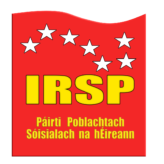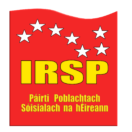Housing, a home – at its most very basic conception is the place that gives you shelter from the elements, without which you would die of exposure – therefore is one of the fundamental human needs, a survival need, a matter of life and death.
Over the course of human history, human beings have flocked together, communally, in everything from caves, primitive towns and villages, agricultural holdings, industrial cities and the modern metropoles. The idea of shelter, the safe intimate spaces where we share our lives with our loved ones, raise our families, rest and recuperate is essentially one of the building blocks of human civilisation – the basis of social and familial bonds that nurtured human development, and evolution towards the conscious , thinking beings that we are today.
This basic need was generally recognized as a human right (in practice more so than in law) by the middle of the 20thcentury, when Ireland (following broad trends in post-war Britain and Europe) followed up, albeit late in the grand scheme of things, with elements of a welfare state of its own that included mass building of social housing for the Irish working classes. Mass housing schemes, and new communities such as Ballyphehane and Gurranabraher in Cork provided high quality housing in response to housing crises of the day – overcrowding and slum-settlements in the city centre were cleared out and citizens were provided with quality social housing, homes that guaranteed their shelter and immediate security. This was common across Irish cities with similar examples built in Dublin such as Ballyfermot, Crumlin and Cabra among many others.
A nascent Modernism was on the rise in Ireland and along with a sense of and drive towards progress, Irish capitalism needed a secure and stable Irish workforce – and state provided housing was seen as an essential part of the development of mid-century Irish capitalism. Ireland, having spent most of the modern era fully under the colonial yoke of Britain, and later partitioned never saw the full benefits of Modernism and its universalist drives towards progress and development. Sometime around the mid-1980s, and exacerbated by the fall of the Soviet-bloc in 1989 – the visions and high ideas of endless progress, and state sponsored development that characterized the period of modernism began to dissipate. Capitalism took an unexpected turn towards a new direction. Neoliberalism, an economic theory and project imagined in obscure university Economics departments in Chicago and Vienna was thrust forward upon western economies – a new market fundamentalism that gradually broke down the post-war European consensus. With Soviet communism off the stage, Neoliberalism set off on a course that influenced the world economy to degrees that nobody could have imagined.
This directly influenced housing policy in Ireland, and thus began a roughly 30 year cycle of privatisation, deregulation and financialization – a philosophical and economic shift towards a seemingly unstoppable process that led to the Celtic Tiger economy, its collapse, and all the foul consequences suffered by the Irish working classes since, as a result. The next articles in this series will look at how Neo-liberalisation has changed the Housing landscape in this country – to the massive benefit of the propertied classes and their political representatives, and the social reality and struggles left facing the Irish working class. Housing is no longer seen as a home, as the basic human survival need of shelter – but an asset to be traded and speculated upon. We will be asking questions such as how did this come to be – the philosophical and sociological underpinnings of such a political project – who wins and who loses?

